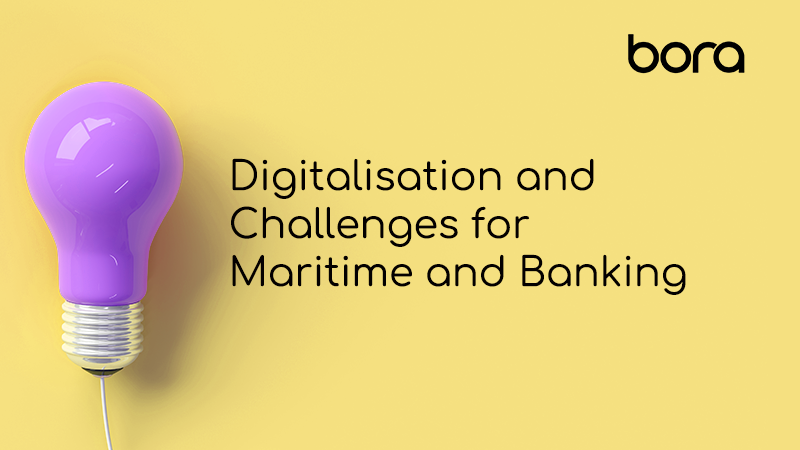In the last part of the series, we will focus on two critical infrastructures, the maritime and banking sectors. Both sectors have undergone enormous digitalisation over the past years. What are the new challenges they are facing?
If you haven’t read the previous blogs, on 17 and 18 June 2020, I had the honour to be invited and participate in the 5th Data PrivacyData privacy is the process of safeguarding an individual’s personal information, ensuring it remains confidential, secure, and protected from unauthorized access or misuse. More and Protection Conference. This is an annual event that has gained much popularity within the community of Data ProtectionWhat is Data Protection? Data protection refers to the practice of safeguarding sensitive information from unauthorized access, disclosure, alteration, or destruction. It involves implementing policies, procedures, and technologies to ensure... More Officers (DPO).
In this three-part series of posts, I discuss the highlights of this interesting conference. In part one, we saw challenges to privacy because of the use of technology and personal data to contain the COVID-19 pandemic. While in part two, we took a glimpse into the future of privacy and international travel.
Situational Awareness Of Maritime Cyberattacks & Data Protection
Adjutant Professor at the Hellenic American University, Isidoros Monogioudis discussed the widescale digitalisation of the maritime sector. He focused on the challenges that these efforts create.
The convergence of IT and OT technology in ships has expanded the threat landscape. Its deployment introduced the challenge of real-time processing of data in the OT environment. Other new problems arise with strict access control to a diverse array of OT systems. Fault tolerance is essential here and embedded systems have limited resources. Monogioudis says:
Vessels digitalisation and the numerous different Operational Technology devices deployed have created a new digital landscape in the Maritime industry. The specific hardware and software being used in this digital landscape are to many previously unknown. New security risks are evolving and the impact is very significant. This is mainly due to the direct connection with the physical world and the consequent operational damage.
The on-going digitalization of the maritime sector and the introduction of Internet of Ships and Maritime Autonomous Systems (MAS) presents many cyber risks. Cybersafety incidents have the potential to disrupt the availability and integrity of on-board OT systems. As such, it is important to establish security controls that result in resilient ships. Monogioudis explains:
Maritime industry companies must move very fast to protect their systems. They need to provide a reliable operating environment not only from a performance perspective but also from a security perspective. Both proactive and reactive measures must be developed and applied with real-time security awareness. Visibility is possibly the most critical solution since the OT environment remains extremely sensitive in providing timely and accurate services.
Big Data In Banking: Opportunities, Issues and Privacy
UK Chairman of the Hellenic Bankers Association, Louis Loizou discussed how big data is being used in the banking sector. His insight was around the opportunities, and the challenges it creates.
Banks are leveraging big data to create customer profiles and provide a unique, personalised user experience. Look at the results of this recent survey. 76% of the surveyed banks said that the key business driver for embracing big data is to enhance customer engagement, retention, and loyalty.
Neobanks or challenger banks present an excellent example of big data usage. Based on artificial intelligence and machine learningWhat is Machine Learning? Machine learning is a subset of Artificial Intelligence (AI) that involves the development of algorithms and models that enable computers to make predictions or decisions based... More technologies, Neobanks have taken full advantage of APIs. They access big data in order to offer a completely automated banking experience, maximising customers’ experience and convenience.
Transforming data into insights offers banks a competitive advantage. Therefore, banks are leveraging big data. This data is used for enhanced fraud detection, risk assessment, and increased customer retention. It is also used for product personalisation, streamlined customer feedback, and workplace improvement.
However, big data introduces several challenges in the banking sector. The legacy systems used by banks cannot cope with the amount of data generated daily. At the same time, a banks collected data needs safekeeping. The truth is, the bigger the data, the higher the risk. Risk comes also in the form of making sense of all this data. With so many different types of data, it is no wonder that banks are still struggling to cope. The task is even harder when trying to separate useful data. Finally, the risk of financial damage because of a cyber incident is extremely high.
Concluding Loizou highlighted that financial service providers must take strict security measures. They must protect their data from all source of cyber threats.
Conclusion
The maritime and banking sectors need to focus on cyber safe and cyber secure methods to ensure data privacy and protection. In doing so, they will avoid both potentially dangerous and expensive breaches.
This year’s virtual Data Privacy & Protection Conference analysed and discussed in detail the different dimensions of data privacy the overall pandemic experience. Also included in the discussions were the institutional, strategic, operational approaches and future actions required based on fundamental human rights, compliance and business development. Overall, it was a very fruitful experience and I am looking forward to next year’s event, whether virtual or live.



